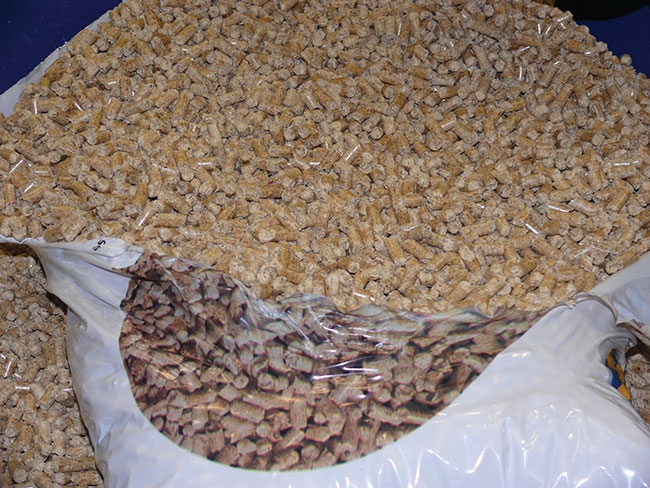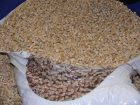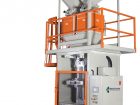
Packaging pellets
February 23, 2015
By Treena Hein
Feb. 23, 2015 - As it is with any product, increasing the sales of pellets is a multi-faceted endeavour. Packaging can certainly play an important role, and the trends in what’s available today in pellet bags reflect the same trends being seen in many other industries. There’s a bigger focus on flexibility than ever before, so that pellet manufacturers can provide the exact bags that meet their customers’ needs.
 Eagle Valley produces 12 different sizes of pellet bags for its heating and animal bedding pellet customers. As it is with any product
Eagle Valley produces 12 different sizes of pellet bags for its heating and animal bedding pellet customers. As it is with any productIt’s all about more sizes, and features that make handling easier or attract the eye on store shelves. Canadian Biomass looked into recent changes in wood pellet bags and the bagging process – and perhaps this will start a conversation at your firm.
Eagle Valley in Princeton, B.C. produces 12 different styles of wood pellet bags for the heating and animal bedding markets. In addition to domestic sales, Eagle Valley currently ships to countries such as the U.S., Italy, Germany, the United Kingdom, Bahrain, the United Arab Emirates, Korea, Malaysia and Australia. Their ‘Advanced Bedding Management’ (ABM) product for horses, small animals and more is manufactured of 100 per cent whitewood and contains approximately four per cent moisture, which the company says is more absorbent than traditional bedding materials of wood shavings, crumbled newspaper or corn cobs.
While some Eagle Valley bags are the same as they have always been, sales and logistics manager Richard White notes that others have changed quite a bit as technology and materials have allowed. “In the almost 20 years that we have been producing bagged product, Eagle Valley has seen a remarkable change in the sophistication of plastic technology,” he says. For example, the company has worked with one of its suppliers to get a non-slip additive added to the chemical makeup of the plastic it provided. “This has helped us virtually eliminate pallets falling apart while they are on the stacker, the wrapper or during shipping,” White notes. “The product takes a beating in transit and we are constantly working on ways to ship better, build it stronger and keep our customers happy.”
Balcan Plastics in Saint Leonard, Quebec has also kept up with plastic developments, stepping up bag durability over the last few years through securing plastic with added co-polymers. Sales manager Nissim Assayag says this provides greater rigidity, durability and puncture resistance. “The wood pellet bag market is a new segment for us, and sales are growing,” he notes.
In addition to plastic being able to provide better handling and durability, it’s also come to play a bigger role in helping companies differentiate their products from the competition. “There are so many features to help the client [with easier handling] and advertise at the same time,” notes Chuck Guigui, the president of Polypro Solutions in Kirkland, Quebec who has 30 years of experience in the biomass industry. “We can put any style of print onto the bag, whether you want to promote the product, provide easy identification or customer information. Bags can also be made in different colours if needed, with multi-coloured logos.”
Increased colour choices and better imaging has also allowed Eagle Valley to develop a high-end glossy bag “that looks much better in the store, not just out back, where traditionally pellets are stored,” explains White. At Balcan, they now offer up to eight colours on their pellet bags. “Our European customers mostly use five or six colours, but it’s usually two to three here in North America,” says Assayag.
Beyond the durability and appearance changes, pellet bags today also offer easier handling for end-use customers. A wider range in sizes, especially for the cooking appliance market, is the biggest pellet bag change that Rethceif Packaging of Ossian, Indiana has seen in the recent past. “Our machines allow for quick changeovers and accommodate a wide range of sizes,” says sales manager Jeremy Collins.
“It is no longer just a standard bag which serves for every industry,” agrees Guigui at Polypro. “Bags are made to measure for each individual client, tailored to what would work the best for the machines they have at hand.” In the last few years, Balcan has gone to offering two pellet bag sizes, 15 kg and 18 kg, with the smaller ones going mostly into the European market according to Assayag.
In addition to different sizes, other features have been added to bags to make handling safer and easier. “Spout top, spout bottom, duffel top, flat bottom, different-sized lifting loops – the variety of bag you can get goes on and on,” Guigui explains. He adds that pellet bags can now come in a baffled format, so that they don’t bulge out and can easily fit into containers. Another option available these days is a liner that can be sewn directly into the bag so moisture can’t penetrate and ruin the product. “There are also UV stabilizers, so the bags can stay in the sunlight without deteriorating, losing valuable product and avoiding costly claims,” Guigui notes. “Bags can be coated as well for extra protection against the elements.”
Bagging process
When Eagle Valley decided to get involved in bagging, staff spent time researching options. “Hamer was our choice then and if we were to start again we would stay with Hamer,” White says. “The machinery is durable, the maintenance is doable and affordable, and the technical support is fantastic.”
Rethceif is a bagging machine maker, and now offers two models of vertical free-flow machines with capacities ranging from 14 to 24 tons per hour. Their baggers are designed to remove all unnecessary movement, which Collins says has proven to be a robust and long-lasting approach. “With fewer moving parts, our customers spend less time and money on maintenance and more time packaging product,” he explains.”
Of all the things he’s noticed over the last few years having to do with pellet bagging, handling and transport, Collins notes that automated palletizing has become a significant priority among Rethceif customers, and the company has taken action to meet these needs. “We are a Kawasaki robot integrator and offer a full range of palletizing solutions,” he notes. “We also build our own conveyors and pallet dispensers, which allows us to control the quality. For transportation and storage, a stable stack with a complete moisture barrier is a must.”
Whether you have been using the same bags for a year or a decade, it might be worth looking at how they could be updated in order to boost sales. Customers appreciate packaging that meets their needs and is easy to use, and the investment you make in research time and new bag features may well be worth the effort.
Print this page

